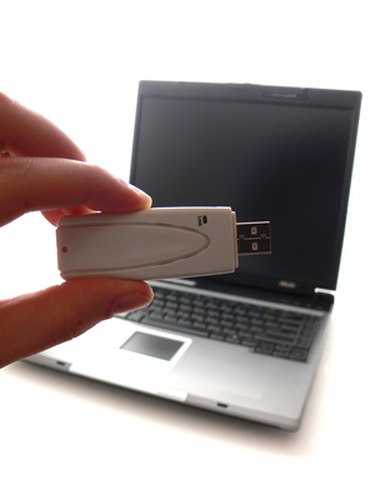
Wireless networking is a booming type of Internet connectivity that allows computers with wireless adapters to access the Web from a local gateway wireless device or radio tower. Since wireless Internet works on radio waves, it is often possible to pick up the signals of neighbors or businesses on one's personal computer for free. Whether you are at home, attempting to strengthen a free ambient wireless signal, or out in a free wireless hot spot, there are several steps you can take to boost your wireless signal.
Step 1
Get as close to the wireless router you are connected to as possible. Wireless signals weaken a great deal, even over relatively short distances. Moving your computer closer to the gateway device that you are connected to wirelessly will help boost the signal to its maximum potential. It is likely that you will not know where the wireless device you are connected to is located, so either ask workers that oversee a free wireless hot spot, or simply walk around your home or a public area and observe where you get the best signal.
Video of the Day
Step 2
Limit sources of interference. Not only does distance weaken wireless signals, but obstacles and other sources of radio waves weaken them as well. Try to ensure there are as few walls between you and the wireless router as possible, and turn off things like microwaves and other wireless routers.
Step 3
Update your wireless card's drivers. Hardware device manufacturers constantly release newer, more efficient software to power their products. Make sure you have the latest device drivers running on your network card to optimize your signal.
Step 4
Boost the power your wireless card uses. Sometimes wireless cards are set to use less energy than they could in order to save batter power. To set your card to use full power, go to your control panel and click on the "Device Manager." Under the list of devices, double-click your wireless card. Under the "Advanced" tab, there should be a setting for "Transmit Power." Make sure this setting is set to the highest value possible.
Step 5
Get a better wireless card. If your wireless network card is simply too old, it can result in slow wireless connections. Newer cards are typically faster and offer better and more constant software support. Another option is to get a USB wireless adapter, which is an external wireless networking device that plugs into a USB slot. The advantage of USB wireless adapters is that they usually have a couple small antennas that help boost signals, and they don't require you to replace an existing card, which can be difficult, especially with a laptop.
Video of the Day